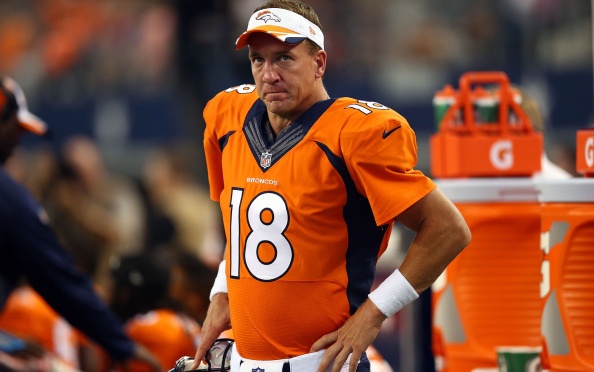Via-420 Times:
For decades, delta-9-Tetrahydrocannabinol (THC) was the cannabinoid that received all the consideration and interest due to the psychoactive effects it offers its consumers when smoked, vaporized or processed via decarboxylation and then ingested.
And although THC has a plethora of medicinal attributes, the component of the marijuana plant that has taken the proverbial spotlight as of late is Cannabidiol (CBD), which is believed to hold more medicinal benefits than any single pharmaceutical drug available on today’s market.
The wave of support for legalizing the manufacturing, possession and use of CBD concentrated into an oil for ingestion has led to a rapidly growing list of states that have successfully passed (or trying to pass) restrictive legislation allowing the use of Cannabidiol as a treatment for those suffering with certain disorders involving seizures.
So how did those walking around in the dark ages suddenly see the limitless, advantageous light that is Cannabidiol?
Was it via a signal in the night’s sky similar to that of the Bat-signal that read CBD?
Well, as it turns out, it did involve a television broadcast, but the caped-crusader and his worm-loving sidekick were nowhere to be found.
You take a well-known doctor, place him in a documentary about the medicinal benefits of marijuana featuring a little girl that receives reprieve from her daily regimen of seizures via ingesting hash oil rich in CBD, and the next thing you know the whole country has become lovesick for Cannabidiol.
Now don’t get me wrong here. I think the nation being awakened to the beneficial compounds that the marijuana plant has to offer anyone with an endocannabinoid system is monumental.
But there’s a part of me that wonders if the newly-aroused supporters of all-things-CBD even know what the THC they’re so excited about.
So, let’s ring the bell and let class begin as we attempt to school those new to the miracle that is Cannabidiol, so the next time their neighbor asks them about their newfound obsession with CBD they can answer properly as opposed to giving the it-comes-from-marijuana-and-it’s-great-for-treating-seizures reply.
Teacher, what is Cannabidiol?
Well, Timmy, Cannabidiol is the second most abundant cannabinoid found in the most sensational plant genus known to mankind: cannabis.
Teacher, if I ingest or smoke Cannabidiol, will it get me high?
No, Timmy. Cannabidiol is one of the components of cannabis that won’t offer the consumer the psychoactive effect that is sought after by recreational users of the plant’s flowers and resin.
In fact, Cannabidiol has actually been scientifically proven to neutralize or offset some of the effects of THC such as the I-have-to-eat-something-right-now’s. Or in laymen’s terms, the munchies. Which could prove to be an effective treatment for those suffering with eating disorders or struggling to maintain their weight.
Now that the proverbial cat is out of the bag regarding the medical efficacy of cannabinoids like CBD, more research and studies are being conducted exploring the multitude of benefits they have to offer. Which fortunately results in an ever-growing list of conditions and disorders that can be treated using concentrated forms of Cannabidiol.
Teacher, what’s a proverbial cat?
Stifle it, kid, I’m trying to work here!
Now. Where was I?
As of right now, the evidence showing CBD to be an effective treatment for individuals enduring seizures is mostly anecdotal due to restrictions courtesy of our beloved federal government’s antiquated drug policy. (Which may soon be changing for the better.) But research conducted by companies such as G.W. Pharmaceuticals suggests that CBD could be used for treating symptoms of rheumatoid arthritis and other autoimmune diseases, diabetes, nausea, bowel disorders, and numerous other side effects associated with poor health.
Dr. Sean McAllister, a scientist from the Pacific Medical Center in San Francisco, made a groundbreaking discovery regarding the powers of CBD. He’s been studying cannabinoid compounds for the last 10 years and is now in search of new therapeutic interventions for various cancers.
Dr. McAllister happily discovered that Cannabidiol is a potent inhibitor of cancer cell proliferation, metastasis, and tumor growth. Results from his experiments with breast cancer showed the number of cancer cells shrink the more CBD was administered.
For all intents and purposes, Dr. McAllister’s discovery regarding the tumor-shrinking capabilities of Cannabidiol could prove to be an effective, non-toxic therapy for those suffering with destructive forms of cancer.
Research involving mice conducted by a group of cardiologists at Hebrew University found that a dosage of CBD immediately following a heart attack can reduce infarct size by approximately 66 percent.
Raphael Mechoulam of the Hebrew University, Jerusalem, and Faculty of Medicine, whose been involved with the study of cannabinoids for almost 50 years, examined mice that were bred to have a version of type-1 diabetes designed to manifest right around 14 weeks.
Said mice were treated with CBD for the first 7 weeks of their life and then again 7 weeks later. Mechoulam concluded that only 30 percent of the mice had developed diabetes compared to the 90-100 percent that were given a placebo.
Mechoulam then repeated the experiment but didn’t introduce Cannabidiol until the 14-week mark when the diabetes first developed.
The study’s mice were then tested at the age of 24 weeks and again only 30 percent of the mice that were treated with CBD were found to have diabetes, which led Mechoulam to conclude that “CBD did not just prevent onset, it blocked the development of diabetes.”
It seems that as more studies reveal the boundless medical benefits that cannabinoids have to offer, the closer we’re coming as a nation to realizing that prohibiting a plant that offers all of mankind a plethora of medicinal attributes was truly a colossal mistake.
I’m looking forward to the day when we look back on these times from a better point of view.
Aren’t you?
Free the plant already!


![‘F**k it, I Quit’ News Anchor Charlo Greene Explains Why She Said it [Watch]](https://veteransforcannibis.files.wordpress.com/2014/09/alaskaanchorscreenshot.jpg?w=660&h=361&crop=1)
